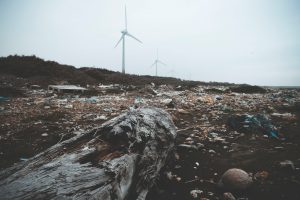How often do we see articles about waste, pollution and contamination; here’s a good (bad) one:
http://www.bbc.co.uk/news/av/world-europe-43630798/russians-protest-over-toxic-landfill-near-moscow
We need to consider all the possible ways that we can reduce waste – and that process starts with design. Whether process design, product design, building design… the amount of waste generated is embedded in those first elements of the design and, more importantly the design brief.
One of my favourite examples is the Christmas Cracker. The brief for Christmas Crackers must have gone something like this:
“A product wrapped in non-recyclable packaging that comprises a number of smaller elements that will go into landfill within 10 days of opening”.
Here’s a challenge: for goodness sake – rethink the Christmas cracker. Make a cracker that you can re-use and fill with a hand-made or upcycled gift. Put it in a brown paper bag.
This is a slightly silly example but, just checking the stats and it appears that in 2014 about 300 million crackers were pulled over Christmas, so maybe not so silly after all…
What I’d like to propose today is new law (!) that should be part of every design brief:
THE LAW OF EXTRAPOLATION
Now extrapolation is defined as:
“the action of estimating or concluding something by assuming that existing trends will continue or a current method will remain applicable”.
I would like to take the “continuation of trends” part of that for the new LAW, which is this:
The product or process should be capable of manufacture, use or operation indefinitely with no negative impacts.
Of course the big question is – how do you define “negative impacts”. I deliberately haven’t tried to do that as leaving it open encompasses everything, from environmental impacts to health impacts, economic impacts to quality of life impacts.
Just food for thought…